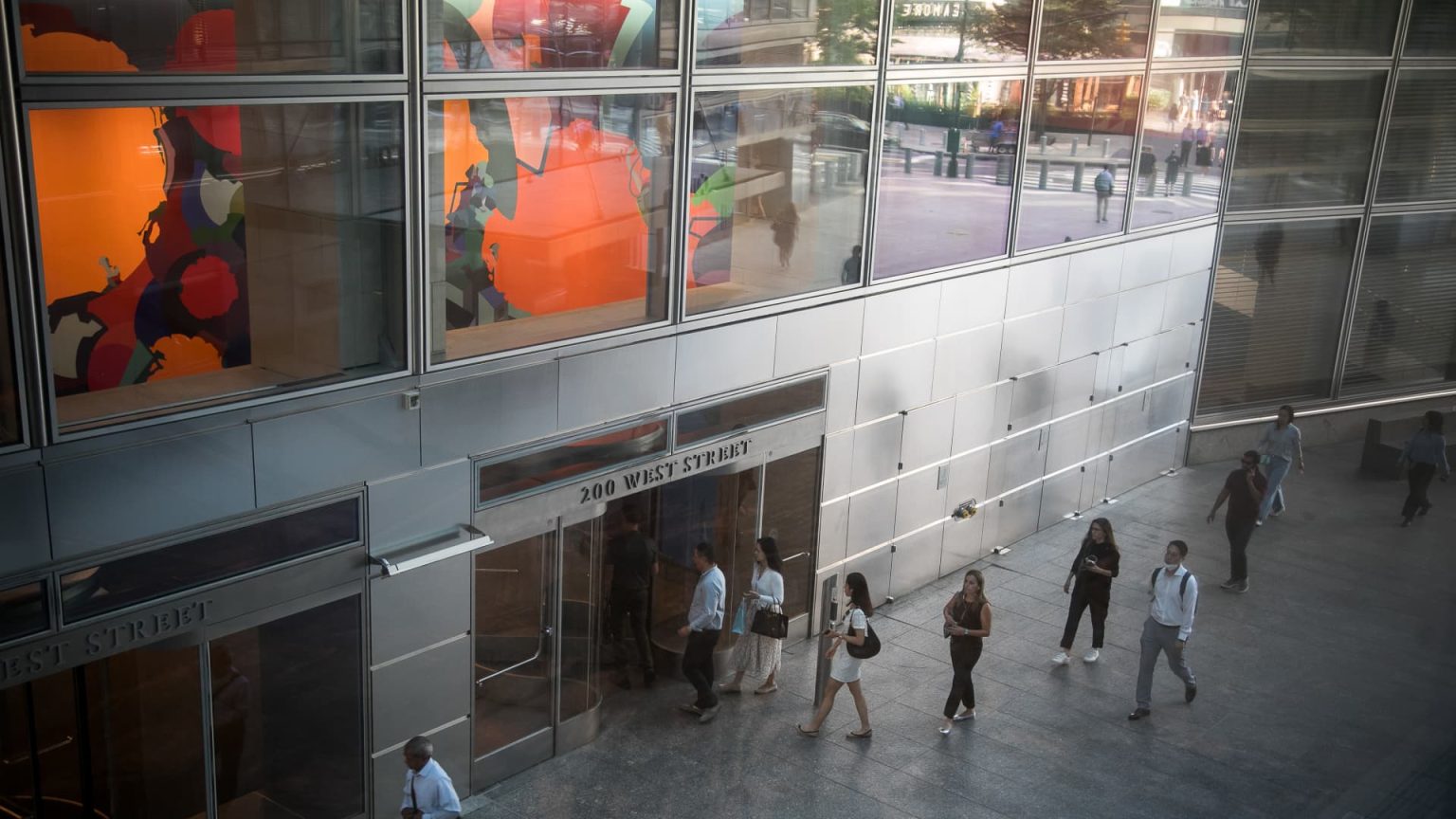Goldman Sachs headquarters in New York, US, on Thursday, July 6, 2023.
Michael Nagle | Bloomberg | Getty Images
This report is from today’s CNBC Daily Open, our new, international markets newsletter. CNBC Daily Open brings investors up to speed on everything they need to know, no matter where they are. Like what you see? You can subscribe here.
What you need to know today
Cautious rise
U.S. stocks edged up slightly Wednesday as traders digested earnings reports, with Tesla, Netflix and IBM reporting after the bell. Asia-Pacific markets traded mixed Thursday. China’s Shanghai Composite fell 0.33% as the country’s central bank left its one- and five-year loan prime rates unchanged. But Hong Kong’s Hang Seng Index managed to add 0.26%, reversing two straight days of losses.
Tesla’s record revenue
Tesla booked record revenue of $24.93 billion, a year-on-year increase of 42% thanks to price cuts. However, that meant operating margin dropped to 9.6%, the lowest for the last five quarters. Still, net income increased 20% from last year to $2.7 billion. Both profit and revenue beat Wall Street’s expectations. But shares sank 4.19% in extended trading after CEO Elon Musk failed to give concrete information on Cybertruck and robotaxi plans during Tesla’s earnings call.
Netflix’s crackdown worked
Netflix’s second-quarter revenue rose 3% to $8.19 billion from a year earlier and net income increased 3.47% to $1.49 billion. Subscribers jumped 5.9 million last quarter as Netflix stopped password sharing. Netflix also removed its cheapest ad-free plan in the U.S. and U.K. Its shares plunged 8.26% in after-hours trading, but that’s a sign investors are selling shares to lock in profits, CNBC’s Alex Sherman wrote.
Not all that is Goldman glitters
Goldman Sachs’ profit fell 58% to $1.22 billion, or $3.08 a share, missing estimates. Goldman’s decline in trading and losses related to GreenSky sapped around $3.95 from per share earnings. Revenue fell 8% to $10.9 billion, marginally beating expectations.
[PRO] Conviction over Chinese AI firms
Investor excitement over generative artificial intelligence isn’t limited to the U.S. technology companies. Goldman Sachs just named its top picks of Chinese firms that are likely to benefit from AI — two are on its conviction list, meaning that the bank expects them to have the biggest potential jump in price.
The bottom line
It’s all about expectations.
Prior to the start of the second-quarter earnings season, investor relations departments and analysts massaged expectations downwards. The most obvious example is Goldman Sachs — its woes in consumer banking, from its attempt to sell GreenSky to its talks to offload its Apple credit card and savings account products, were well publicized.
When Goldman reported a disappointing second quarter, then, it didn’t take investors aback. Its shares even rose almost 1% on the news. Astounding, if you think about the bank’s 58% fall in profits. But not that surprising, given that investors were prepared and were probably heaving a sigh of relief there wasn’t more bad news.
Elsewhere, the strategy of managing expectations seems to be working. More than three quarters of S&P companies that have reported results have exceeded expectations, according to FactSet data. That reinforced hopes that the economy can elude a recession as inflation falls and rates remain high.
Major indexes eked out small gains on that sentiment. The Dow Jones Industrial Average rose 0.31%, its eighth straight day of gains and longest winning streak since September 2019. The Nasdaq Composite was essentially flat and the S&P 500 climbed 0.24%.
Thus far in July, the S&P has added 2.6%. By contrast, the small-cap Russell 2000 Index has risen almost 5% in the same period, CNBC’s Darla Mercado and Gina Francolla noted. It’s a sign that more firms are participating in the market rally, potentially giving stocks more room to grow.
Tom De Luca, senior researcher at Vanguard, concurs. “Investors are saying loud and clear that they expect the current stock market rally to continue,” said De Luca. “Right now, short-term optimism is higher than we’ve seen since December 2021, right before the start of the 2022 bear market.”
Read the full article here




